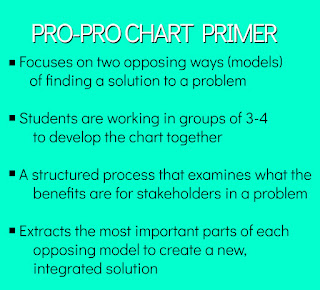A Reflection on the Most Likely To Succeed Film
Last Thursday evening, I travelled to Milton District High School for their showing of the documentary Most Likely To Succeed. If you haven’t seen it, check out the trailer before you read any further. I’ll wait here until you finish.
Done? Pretty cool, huh? . The screening I saw was put on in collaboration with the school and their school council and it was my first opportunity to view the film. I’m currently reading Tony Wagner and Ted Dintersmith’s book, on which the film is based, so it was a timely event for me.
| High time for a rethink on the model. |
The film makes the argument that our school system is built on an outdated structure designed in the 19th century, during the beginning of the industrial age. It places greatest value on knowledge acquisition and standardization of education. The Committee of 10 made decisions like the division of subjects, and at what age students would start to cover different subjects and content. This type of education is out of step with the age of ubiquitous, on demand information and doesn’t prepare students the economy in the 21st century. The film points to the rise of automation in jobs from factory line jobs, to journalistic writing, even lawyers, all these jobs are falling victim to this rise in automation. Instead, the film suggests that in order to succeed in the 21st century, what is needed are people that are creative, innovative problem solvers, that work well in teams on projects, and are able to think critically with the vast amount of information we have access to, something that our current school system is doing poorly.
The film then focuses on a high school in San Diego called “High Tech High”. This school is fascinating: it is a total rethink of how and WHY they educate their students; a public charter school not beholden to the curriculum expectations of the state. The students at the school covered less breadth of content in favour of “going deep”, REALLY deep, on some content. There are no bells that break up the school day, teachers are not hired by subject, instead teach whatever content they are inspired to cover. Most importantly students were put fully in the driver's seat of their own education. They were empowered to make real choices about what they learned, learning soft skills like working in a team, self confidence and the ability to take criticism in the process.
Reaction
I left the viewing energized! It was empowering and I admit, I found it a bit disorienting to have so many innovative ideas thrown out there in 90 minutes. My brain was spinning with ideas of “How can I apply some of this to my own practice?” While some of the ideas seemed out of reach within our context at Halton, while High Tech High had full autonomy to cover what they wished in their classes, we are still beholden to the Ontario curriculum, so we don’t have the luxury of going deep on a very limited set of topics. In spite of that, within the constraints that we have to work with, how can I empower students more within the curriculum?
No bells!
High Tech High’s school day was not punctuated by the ringing of bells marking the beginning and end of any particular class period. Instead, there was flexibility to structure the day based on the educational needs of the day. Coming from the art classroom, where it can sometimes take 2-3 hours to hit a good groove of art making and creating, that concept really resonated for me.
Teacher Autonomy and Teacher as Mentor
From the vantage point of a teacher, I also wondered about the teaching lives of the teachers involved. It must be incredibly empowering to have the agency they get to choose entirely what they want to teach and how it gets taught, and their shifted role away from the status quo teacher role to one of mentor and guide. On the flip side, the teachers at the school are hired on a one year (renewable) contract only, with no tenure. That left me wondering what metric their performance as teachers is measured on? There were some unanswered questions in the film that may be further explained as I continue to read the book.
Demonstration of Learning
One major shift highlighted in the film was how students were evaluated on their learning. Students were not asked to study for any tests. Instead, the film highlighted one night where “parents, friends’ parents, teachers, administration and community members” were invited to one major performance night. This night was high stakes and a real deadline that students needed to meet, and they created incredibly complex and sophisticated ways to do so. The film focused on two such final products: one large kinetic sculpture involving complex gear mechanisms as well as a student written play. While it remained unclear how exactly students were being evaluated that evening by whom and on what metric, the sophistication of the projects and the considerable personal growth of the students was a sight to behold. One aspect I did really like was how the students were interviewed after that evening, being asked to reflect on how it went and what they learned. This type of reflective interview is something I am definitely going to take away from the film and apply to my own classes this semester.
Have you seen this film? What did you take from it? If so, comment in the section below the most lasting ideas you were left with after watching.
Further Viewing:
Ted Dintersmith: Prepare our Kids for Life, Not Standardized Tests TED Talk
Tony Wagner: Play, Passion, Purpose TED Talk

Comments
Post a Comment